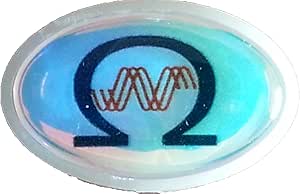If you reside in a house or apartment or just want to keep your home free of electromagnetic fields, there are a number of methods to reduce exposure. One of the most effective is to restrict your use of electronic devices. You could also consider EMF block paint to prevent EMF radiation from reaching your home. Continue reading to shield your home against EMF radiation would be to use a RF shielding canopy. This is a cloth made of net which contains EMF shielding. It is utilized to stop EMFs from entering rooms. Another option is to have your home fitted with a conductive enclosure. These devices are called Faraday cages.
Several studies have shown studies have shown that nonionizing EMF produces antiproliferative effects in HCC cells. The mechanism behind AM RF EMF's anticancer activity in vitro is believed to result from the deregulation in cancer-related stem cells. Helpful hints could explain the long-term effects observed in patients suffering from advanced HCC. However, the mechanism of AM RF EMF's effect in cancer patients is not yet clear.
Effects of AM RF EMF on HCC tumour growth in vivo were studied in mice. The tumours were divided in three different groups. The first group was not exposed to RF EMF. The second group was exposed RF EMF at a frequency that is similar to that used in humans. In the third, they were subjected RF EMF at HCC-specific modulation frequencies. The effects of HCCMF on the tumours was assessed against the effect of RCF. The results revealed that cancers treated with HCCMF showed significant shrinkage. However, the tumours treated with RCF did not show any evidence of shrinkage of the tumor.
The reason for tumour-specific AM RF EMF could be due to the fact that cancer cells require Cav3*2 voltage calcium channels to promote proliferation and down-regulation. AM RF EMF's antiproliferative effects on HCC cells is caused by CACNA1H the protein which regulates the Ca2+ influx specific to tumors. The findings suggest that CACNA1H could have more broader implications for the treatment and diagnosis of many cancers.

The tumours of the control group were not exposed EMF from RF, and fed a normal mouse diet. The tumours in HCCMF HCCMF group were treated with Huh7 cells after they were five-seven weeks old. The tumors were then killed when they showed excessive burden.
The tumors of the three groups showed different growth curves. The tumours treated with HCCMF showed a significant decrease in size of the tumor after eight weeks. However, the tumors which were treated by RCF showed no shrinkage. The difference was substantial. The tumors treated by RCF had necrosis that is common in tumors that have been exposed to RCF. block emf is possible that this necrosis was caused by a lack of oxygen in larger cancers.
In conclusion, the findings show that AM RF EMF exhibits anticancer effects in vitro and in the vivo. Numerous studies have demonstrated the fact that AM RF EMF produces measurable reduction in tumours for HCC patients. There is a possibility that AM RF EMF produces these effects through CACNA1H, a protein that is involved in the process of tissue-specific Ca2+ influx. Additionally, AM RF EMF may have a long-lasting impact on the growth of HCC tumours in vivo.
